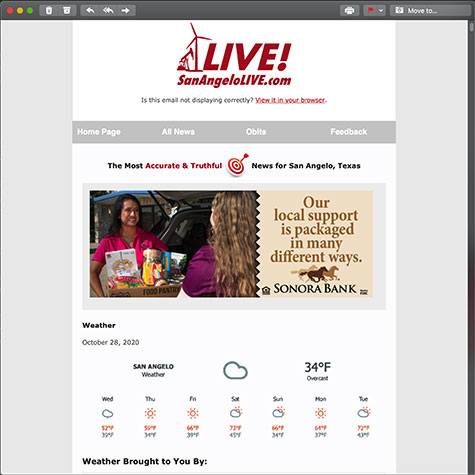Pfluger: Rural Areas Need Backup Communications in Disasters
WASHINGTON, DC — Congressman August Pfluger (TX-11), a member of the House Energy and Commerce Committee, participated in a Subcommittee on Communications and Technology hearing to discuss public safety communications in the United States.
Witnesses included Mr. Steve Newton, Emergency Management Director, Chatham County Emergency Management, Sheriff Shannon Dicus, San Bernardino County, Dr. Brian Fontes, Former Chief Executive Officer, National Emergency Number Association, and Mr. Randall C. Wright, Executive Director, WUFT/WRUF, Florida Public Radio Emergency Network, and Project Beacon.
Read highlights of the exchange below:
Rep. Pfluger: Mr. Newton, I'll go to you and just refer back to Hurricane Helene and the experiences that you saw there from FirstNet on Hurricane Helene.
Mr. Newton: We saw, first and foremost, the partnerships at the state level of coordinating where we're responding or deploying equipment to where the need is. And then throughout the event, as the event evolved, our ability to move equipment around and make things work. Again, it was a catastrophic disaster force in tremendous damage. Never seen this much from a technical side. The type of damage that we saw to fiber optic lines and to the power system, our ability to power cell sites, but the close partnerships there, and the fact that we have several agencies that have their own deployables, and so I'm able to set up my own FirstNet, temporary, compact, rapid deployable. And I think, you know, the challenge, I think we'll see in the near future is, as that becomes more prolific, we still have to coordinate that with the carrier. We want to make sure that we're not creating the interference.
Rep. Pfluger: Well, that brings up a good point. I mean, sometimes we can't stage, sometimes we can't predict. You know, in the case of the floods that happened in my district and in Kerrville, I mean, that highlights the need for secondary options and the challenges of getting into those rural places, whether it's Hurricane Helene, or it's in the Hill Country of Texas or other places. Sometimes you can't actually physically get there. So, you know, I want to hear your thoughts on low Earth orbit direct-to-device options that could be helpful in those cases.
Mr. Newton: So one of my staff members deployed to Helene the day after impact, and his task was to bring back connectivity to PSAPs. And I believe, I don't know if it was his first or his 13th PSAP that he arrived at, but the person greeted him at the door and said, I don't know what an angel looks like, but I believe it's you. And his role was to bring connectivity to a communication center that had been in the dark from the time of impact, and so I think, in fact, where he deployed was a low Earth orbit satellite system, a star-like system, that provided WiFi and that gave you WiFi calling. And that center was then reconnected both with the public and their families, who didn't know - those tele-communicators - how they fared.
Subscribe to the LIVE! Daily
Required


Comments
Post a comment to this article here: